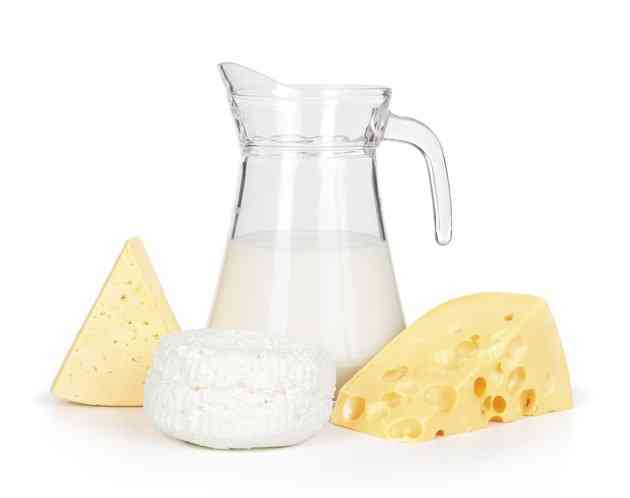How Does the Body Metabolize Lactose?

Lactose, commonly called milk sugar, is the primary sugar in dairy products such as milk, cheese and yogurt. It makes dairy products taste mildly sweet and is a significant source of calories. Lactose is readily metabolized into simpler sugars and absorbed in your intestines if you produce enough enzymes. If not, lactose intolerance develops and causes various gastrointestinal symptoms.
 Cheeses next to a pitcher of milk. (Image: urfinguss/iStock/Getty Images)
Cheeses next to a pitcher of milk. (Image: urfinguss/iStock/Getty Images)Lactose Sugar
Lactose is a type of carbohydrate called a disaccharide, which is a molecule made of two simple sugars. The two simple sugars that comprise lactose are galactose and glucose. All female mammals, including women, produce milk that contains lactose. No other animal and neither insects nor fish can make lactose. The percentage of lactose in milk varies between 2 percent and 8 percent, with human milk containing more than cow and goat milk. Human milk therefore is a little sweeter and higher in calories compared to the milk of most other species. However, compared to sucrose -- which is used to make granulated white table sugar -- lactose is much less sweet.
Metabolism
Your body starts metabolizing or breaking down lactose in the intestines with the help of lactase, an enzyme produced and released by cells that line your small intestine. The enzyme attaches to lactose and cleaves it into molecules of galactose and glucose. Glucose is immediately absorbed into your bloodstream and used by virtually all your cells so they can produce energy and do their jobs. Galactose cannot be directly used by your body, so it is further converted into glucose after additional work by lactase and other enzymes.
Potential Issues
Problems with lactose metabolism occur when not enough enzymes are produced. A lack of lactase leads to a condition called lactose intolerance, which is characterized by abdominal bloating, flatulence and diarrhea. Undigested lactose travels to the large intestine and provides "friendly" bacteria with a food source. The bacteria ferment the sucrose in order to break it down, which produces gas and the related symptoms. Galactosemia is another problem related to lactose metabolism and is caused by the inability to convert galactose into glucose. When too much galactose builds up in the blood due to a lack of certain enzymes such as galactose kinase, it causes damage to the brain and other organs. Galactosemia is rare, but it can lead to serious problems in breastfed infants if not caught in time.
Recommendations
Lactose intolerance in adults is not a serious or life threatening condition, but it causes a variety of uncomfortable and potentially embarrassing symptoms. Most people produce less lactase as they age, although some ethnic groups have a much higher incidence of lactose intolerance. More specifically, it is most common in African American, Asian, Hispanic and Native American people. If you are lactose intolerant, lactose-free milk is available in most grocery stores. You can also take lactase supplements -- typically in tablet form -- with dairy products or (preferably) just before consuming them.




